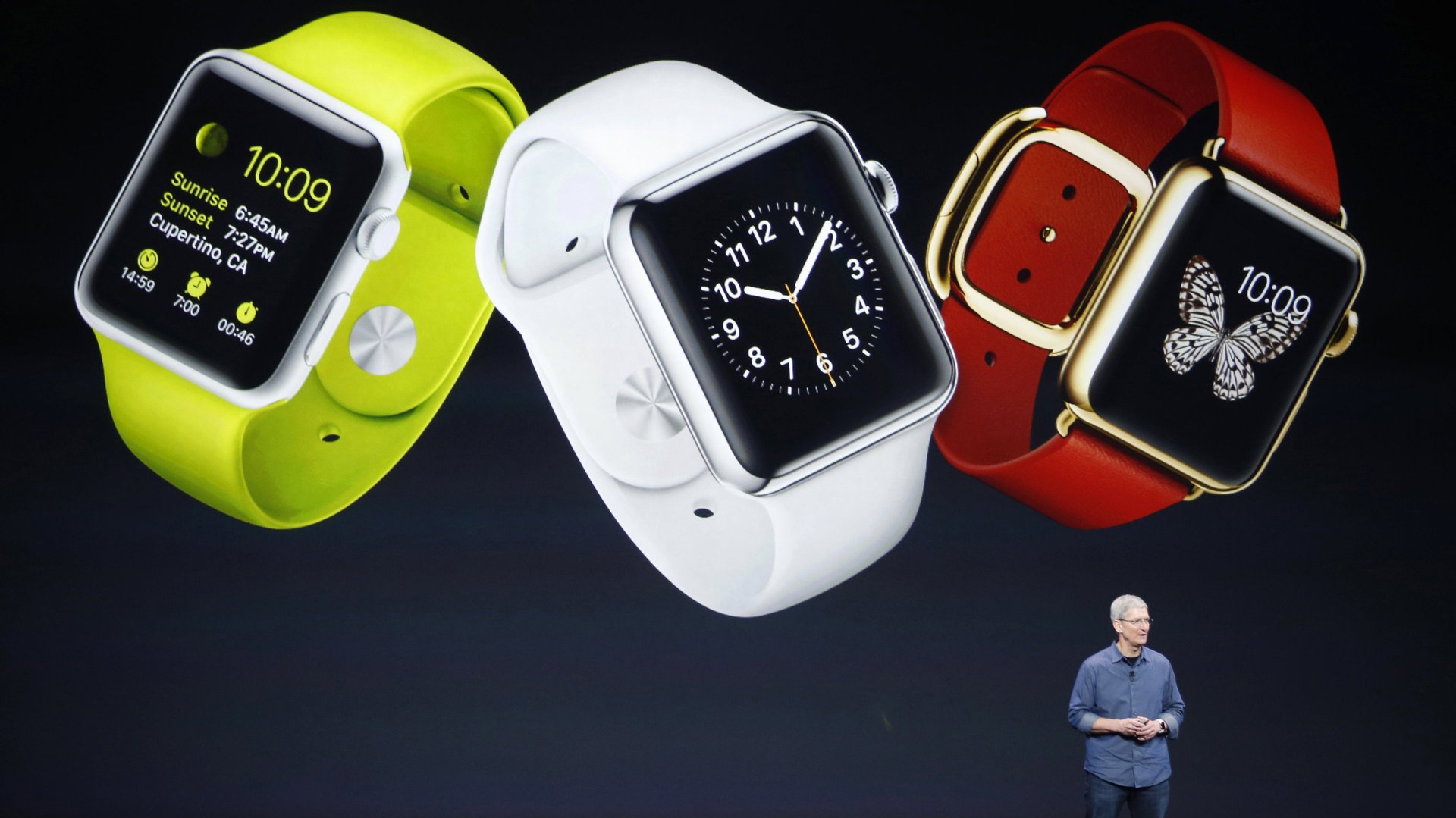Why your Apple Watch will die faster than your iPhone
Apple CEO Tim Cook is counting on buyers of the Apple Watch to view it not as a timepiece but as an extension of the iPhone. If they can make that mental leap, then they’ll think nothing of repeatedly plugging it in for a charge.


Apple CEO Tim Cook is counting on buyers of the Apple Watch to view it not as a timepiece but as an extension of the iPhone. If they can make that mental leap, then they’ll think nothing of repeatedly plugging it in for a charge.
But if they’re counting on getting through the day without having to recharge their new smart watch, they may be in for disappointment—and Apple, for some flack.
The always hyper-secretive company hasn’t said how exactly it will power the Watch, which Cook unveiled publicly last month. Some suspect Apple has been deliberately lowering expectations for the device’s power performance. But experts say that, given the space confines and the high demands of its electronics, the Watch will struggle to last a normal 16-hour waking day on a single charge.
As a result, it will probably include software that carefully regulates its functionality to conserve the battery. In other words, you likely won’t be able to actively (screen on) check your GPS, monitor your messages, instruct Siri to call your friend AND consider Apple’s latest suggestion on how many calories you can burn.
“It may be easier to solve the problems facing vehicle batteries than in a wearable,” says Samir Mayekar, CEO of Chicago-based SiNode Systems, which is working on an advanced anode for wearable devices. “The ratio of active material to dead weight in a wearable is much lower than in a smart phone or a car.”
The consensus among experts queried by Quartz is that Apple will rely on the same battery material that’s in most laptops, smart phones and nearly every other lithium-ion battery on the planet: cobalt oxide, a chemistry commercialized in 1991. Cobalt oxide is a powerful electrode material, packing more electrons into a dense space than any of its commercial rivals. But Apple can put very little of it into the tiny space inside in a watch—much less, proportionately, than can go into an iPhone battery, for example.
One recent advance that will help Apple is that the newest lithium-ion cobalt oxide batteries operate at higher voltages than earlier versions, meaning they deliver more energy, experts say.
Venkat Srinivasan, a scientist at Lawrence Berkeley National Lab, tells Quartz that Apple will probably use a version of cobalt oxide operating at 4.35 volts and delivering about 165 milliampere hours per gram, a 22% improvement on the best lithium-ion cobalt-oxide batteries delivered in recent years. Advances in cobalt-oxide are “really remarkable,” Srinivasan says.
But it doesn’t bode well for Apple that it is already the target of complaints about battery life in connection with its iOS 8.0.1 system, used in the iPhone 6 and downloadable for older models. The company has sought to fix the problem with the release of 8.0.2. But watch-buyers may be less patient.